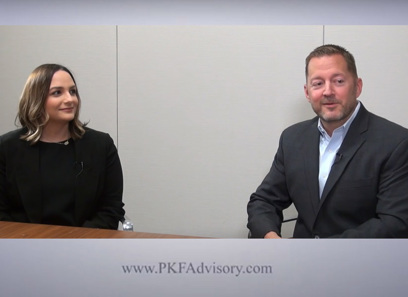All You Need to Know About Purchase Price Allocation
Wiki Article
Important Ideas of Recognizing Purchase Price Allocation in Mergers and Acquisitions
The principle of Purchase Price Allocation (PPA) plays a crucial role in the realm of mergers and acquisitions, as it determines just how the complete acquisition rate is assigned amongst different properties and responsibilities. This allocation not just affects financial statements but also has significant implications for a good reputation and devaluation. Abiding by accounting standards such as IFRS 3 and ASC 805 is necessary, yet the intricacies associated with precisely valuing possessions can position considerable challenges. As we explore the basic parts and methods of PPA, one need to think about how these aspects connect to form the economic landscape post-transaction.Definition of Purchase Price Allocation
Recognizing acquisition cost allocation (PPA) is important in the context of mergers and procurements, as it involves the procedure of distributing the overall acquisition cost amongst the different tangible and abstract assets gotten. This allocation is crucial for identifying the fair worth of the assets and obligations assumed in the deal, which ultimately impacts the economic statements of the obtaining firm.PPA typically includes numerous components, consisting of identifiable properties such as building, equipment, and stock, along with intangible possessions like hallmarks, patents, and client connections. In addition, it accounts for any type of responsibilities that the acquiring business presumes from the target. The appropriation process should comply with pertinent accounting standards, such as IFRS 3 or ASC 805, which mandate fair value assessments for each identified asset and obligation.
The resulting allowances can significantly impact the acquirer's annual report and income statement, affecting devaluation, amortization, and goodwill computations. Proper execution of PPA makes sure compliance with regulative requirements and provides openness to stakeholders relating to the monetary implications of the purchase. On the whole, a well-defined PPA process is essential for reliable monetary reporting and tactical decision-making in the context of mergers and purchases.
Importance of PPA in M&A
The importance of purchase cost appropriation (PPA) in mergings and acquisitions prolongs past simple conformity with bookkeeping criteria; it plays a crucial role fit the economic landscape of the obtaining firm. A well-executed PPA not just reflects the fair worth of obtained properties and obligations however also affects future financial coverage, tax obligation ramifications, and strategic decision-making.Precise allocation of acquisition price aids in recognizing and valuing intangible possessions such as brand name equity, consumer relationships, and exclusive modern technologies, which can substantially impact a company's affordable benefit. These valuations can impact future problems examinations, thus affecting reported revenues and supply efficiency. An incorrect PPA can cause monetary misstatements, possibly causing regulatory scrutiny and reputational damage.
Additionally, PPA is vital for straightening the rate of interests of stakeholders, consisting of financiers, analysts, and financial institutions. Inevitably, a durable PPA procedure serves as a structure for efficient integration strategies, helping in understanding the expected harmonies and general success of the merger or purchase.

Secret Components of PPA
A comprehensive acquisition price appropriation (PPA) includes several vital elements that are crucial for precisely reflecting the worth of acquired entities. The key aspect of PPA is the recognition of the overall acquisition price, which consists of Understanding Purchase Price Allocation in Mergers and Acquisitions not only cash money yet also any type of responsibilities assumed and equity instruments issued. This overall purchase cost acts as the structure for the allowance process.Next, the recognizable assets and obligations of the target firm have to be examined and gauged. This includes concrete properties such as building, plant, and equipment, in addition to abstract properties like trademarks, licenses, and client partnerships. Accurately valuing these possessions calls for a comprehensive understanding of the target's monetary setting and operational abilities.
Additionally, a good reputation stands for the extra of the purchase cost over the fair value of the identifiable net properties obtained. Ideal audit criteria, such as IFRS or US GAAP, determine the therapy of these elements, making sure compliance and consistency in the PPA process.
Techniques for PPA
Utilizing numerous methods for purchase rate allowance (PPA) is important in guaranteeing that the valuation of gotten possessions and liabilities is both exact and certified with accountancy standards. One of the most frequently utilized techniques include the revenue strategy, market method, and price technique.The income approach estimates the worth of a possession based upon the here and now value of its predicted future cash money flows (Purchase Price Allocation in Mergers and Acquisitions). This approach is specifically effective for intangible possessions like licenses or trademarks, where future profits generation is a crucial factor to consider. Alternatively, the marketplace method compares the acquired properties to comparable possessions that have been sold in the industry, permitting a valuation based upon observed market deals
The cost strategy, on the other hand, concentrates on determining the replacement or reproduction expense of an asset, much less any built up devaluation. This technique is especially useful for tangible possessions and offers a baseline assessment.
Each approach has its staminas and is commonly made use of combined with others to triangulate a precise value. Selecting the suitable technique relies on the nature of the possessions acquired, the available data, and the specific conditions surrounding the deal, ensuring a thorough and defensible PPA procedure.
Typical Difficulties in PPA
While the methodologies for acquisition price allocation (PPA) provide an organized framework, a number of common challenges can complicate the process. One substantial difficulty is the valuation of intangible possessions, such as brand name equity and client partnerships. These assets typically lack a clear market rate, making it hard to determine their fair value accurately.Another obstacle emerges from the assimilation of monetary data from the gotten entity, which might entail inconsistent accountancy methods and differing reporting standards. Understanding Purchase Price Allocation in Mergers and Acquisitions. This inconsistency can result in difficulties in integrating financial statements and accurately attributing values to specific properties and responsibilities
Furthermore, the subjective nature of certain assumptions used in PPA can present prejudice. Approximates related to future money flows and discount rate prices are inherently speculative, and small changes in these presumptions can result in significantly different evaluations.

Conclusion
In verdict, Purchase Price Allocation (PPA) plays a pivotal role in mergers and purchases, making certain accurate appraisal of concrete and abstract properties in conformity with recognized bookkeeping standards. By properly determining and valuing assets and obligations, PPA improves openness and promotes stakeholder trust fund. Using various techniques can attend to typical difficulties in the assessment procedure, eventually adding to notified monetary decision-making and the stability of monetary reporting complying with an acquisition.Report this wiki page